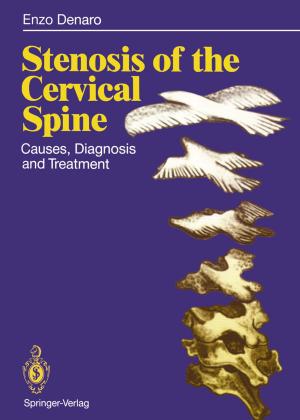Spinal Opiate Analgesia
Experimental and Clinical Studies
Nonfiction, Health & Well Being, Medical, Specialties, Critical Care, Anesthesiology| Author: | ISBN: | 9783642682612 | |
| Publisher: | Springer Berlin Heidelberg | Publication: | December 6, 2012 |
| Imprint: | Springer | Language: | English |
| Author: | |
| ISBN: | 9783642682612 |
| Publisher: | Springer Berlin Heidelberg |
| Publication: | December 6, 2012 |
| Imprint: | Springer |
| Language: | English |
The recent development of the use of spinal opiates as a rational therapy for pain rests on clear and certain experimental data. We have long known the spinal cord to be a highly complex structure. Anatomical studies of the substantia gelatinosa have repeatedly demonstrated signs of massive synaptic interaction between primary afferents, descending pathways and intrinsic neurons. Yet, to date that knowledge, insofar as clinical therapy is concerned, has permitted us only to destroy certain connections within the spinal cord in the hopes that the substrate mediating pain could be anatomically differentiated from those which mediate other function. Though cordotomies are clearly effective under certain circumstances, they suffer from the fact the spinal cord is not organized in such an anatomically discrete fashion as is often times drawn in basic medical text. Rather, functions intertwine exquisitely and specific physical interventions are no more likely to produce a specific effect than smashing of the fmgertip with a hammer will produce just a loss of the fingernail. The development of specific therapies of the spinal cord has come about by our growing aware ness of the intricate organization of the pharmacological substrates associated with specific neural function.
The recent development of the use of spinal opiates as a rational therapy for pain rests on clear and certain experimental data. We have long known the spinal cord to be a highly complex structure. Anatomical studies of the substantia gelatinosa have repeatedly demonstrated signs of massive synaptic interaction between primary afferents, descending pathways and intrinsic neurons. Yet, to date that knowledge, insofar as clinical therapy is concerned, has permitted us only to destroy certain connections within the spinal cord in the hopes that the substrate mediating pain could be anatomically differentiated from those which mediate other function. Though cordotomies are clearly effective under certain circumstances, they suffer from the fact the spinal cord is not organized in such an anatomically discrete fashion as is often times drawn in basic medical text. Rather, functions intertwine exquisitely and specific physical interventions are no more likely to produce a specific effect than smashing of the fmgertip with a hammer will produce just a loss of the fingernail. The development of specific therapies of the spinal cord has come about by our growing aware ness of the intricate organization of the pharmacological substrates associated with specific neural function.















